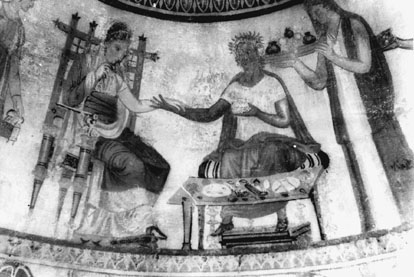

 | Page 231 |  |
and the first Thracian tribal states ruled by local kings emerged in the late sixth–first half of the fifth century b.c. The strong interactions caused a change of culture, and during the late-classical and Hellenistic ages, the Thracian aristocracy adopted diverse achievements from Greece and Anatolia, while many Greeks lived in colonies along the Thracian coasts and inland (Archibald 1998). Several regions of Thrace were influenced by the la tène culture, too, when celts settled there in the early third century b.c. (Domaradzki 1984; Theodossiev 2000). Various sanctuaries, open settlements, fortresses, emporia (trading posts), and towns were excavated, the most important among them being Seuthopolis, Kabyle, Philippopolis, and Pistiros, the last being investigated by Bulgarian, British, Czech, and French scholars (Archibald 1998; Dimitrov and Chichikova 1978).
Diversity in funerary customs increased during the late Iron Age (Kitov 1994), and some rich tumuli, like those at Duvanli and Dulboki, have been unearthed (Archibald 1998; Filow 1934a). At the same time, numerous monumental beehive tholoi (rectangular or barrel-vaulted tombs) were built under mounds for aristocratic burials, the most famous ones being located at Kazanluk (Mikov 1954), Sveshtari (Fol, Chichikova, Ivanov, and Teofilov 1986), and Mezek (Filow 1937; Mansel 1943). About ten hoards consisting of gold and silver vessels of local origin or imports are also spectacular, such as the treasures from Panagjurishte, Rogozen, and Borovo (Ancient Gold 1998; Archibald 1998; Cončev 1956; Cook 1989). The rich materials from the late Iron Age enable many scholars to publish important general studies on the period (Archibald 1998; Fol and Marazov 1977; Gergova 1996; Getov 1995; Hoddinott 1981; Kull 1997; Theodossiev 2000; Venedikov and Gerasimov 1975).

Part of the paintings in the tholos chamber of the Kazanluk tomb, late fourth—early third centuries B.C.
(Courtesy of Nikola Theodossiev)
The Roman period in Bulgaria has been thoroughly investigated since the late nineteenth century. During the first century a.d., the Roman Empire imposed full control upon the Thracian lands, and two provinces—Moesia and Thracia—were established. The Romans constructed
 |  |